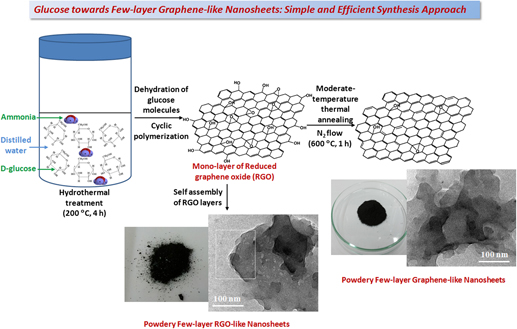Crossref Citations
This article has been cited by the following publications. This list is generated based on data provided by
Crossref.
El Essawy, Noha A.
Ali, Safa M.
Farag, Hassan A.
Konsowa, Abdelaziz H.
Elnouby, Mohamed
and
Hamad, Hesham A.
2017.
Green synthesis of graphene from recycled PET bottle wastes for use in the adsorption of dyes in aqueous solution.
Ecotoxicology and Environmental Safety,
Vol. 145,
Issue. ,
p.
57.
Adel, Marwa
El‐Shazly, Ossama
El‐Wahidy, El‐Wahidy F.
El‐Maghraby, Azza
and
Mohamed, Marwa A.A.
2018.
Eco‐friendly produced lightweight structural graphene/polyamide 12 nanocomposite: Mechanical performance and the controlling microstructural mechanisms.
Polymer Engineering & Science,
Vol. 58,
Issue. 7,
p.
1201.
Henriques, Patrícia C.
Borges, Inês
Pinto, Artur M.
Magalhães, Fernão D.
and
Gonçalves, Inês C.
2018.
Fabrication and antimicrobial performance of surfaces integrating graphene-based materials.
Carbon,
Vol. 132,
Issue. ,
p.
709.
Mohamed, Marwa A. A.
Elessawy, Noha A.
Carrasco-Marín, Francisco
and
Hamad, Hesham A. F.
2019.
A novel one-pot facile economic approach for the mass synthesis of exfoliated multilayered nitrogen-doped graphene-like nanosheets: new insights into the mechanistic study.
Physical Chemistry Chemical Physics,
Vol. 21,
Issue. 25,
p.
13611.
Sudhaparimala, S
and
Usha, R
2020.
Energy efficient functionalization of graphene for tunable fluorescence.
Journal of Physics: Conference Series,
Vol. 1706,
Issue. 1,
p.
012028.
Gürünlü, Betül
Taşdelen-Yücedağ, Çiğdem
and
Bayramoğlu, Mahmut
2020.
Graphene Synthesis by Ultrasound Energy-Assisted Exfoliation of Graphite in Various Solvents.
Crystals,
Vol. 10,
Issue. 11,
p.
1037.
Gürünlü, Betül
Taşdelen Yücedağ, Çiğdem
and
Bayramoğlu, Mahmut Rahim
2020.
Green Synthesis of Graphene from Graphite in Molten Salt Medium.
Journal of Nanomaterials,
Vol. 2020,
Issue. ,
p.
1.
Sunil, K. C.
Suvarna, Saritha
Nairy, Rajesha K.
Chethan, G.
Mustak, M. S.
and
Yerol, Narayana
2020.
Facile, cost-effective and eco-friendly synthesis of carbonyl-rich partially reduced graphene oxide using glucose as a sole precursor.
SN Applied Sciences,
Vol. 2,
Issue. 8,
Hamdy, Esraa
Saad, Laila
Abulfotuh, Fuad
Soliman, Moataz
and
Ebrahim, Shaker
2020.
Enhancement of Molten Nitrate Thermal Properties by Reduced Graphene Oxide and Graphene Quantum Dots.
ACS Omega,
Vol. 5,
Issue. 34,
p.
21345.
Adel, Marwa
El-Maghraby, Azza
El-Shazly, Ossama
El-Wahidy, El-Wahidy F.
and
Mohamed, Marwa A. A.
2021.
Production of reduced graphene oxide from glucose via hydrothermal route: the crucial role of the evolved byproduct gases in deoxygenating the graphitic structure.
Journal of Materials Research,
Vol. 36,
Issue. 4,
p.
896.
Han, Lijuan
Zhang, Ping
Li, Lan
Lu, Shiqing
Su, Bitao
An, Xingcai
and
Lei, Ziqiang
2021.
Nitrogen-containing carbon nano-onions-like and graphene-like materials derived from biomass and the adsorption and visible photocatalytic performance.
Applied Surface Science,
Vol. 543,
Issue. ,
p.
148752.
Sunil, K.C.
Suvarna, Saritha
Chatterjee, Jit
Chethan, G.
Mustak, Mohammed S.
and
Yerol, Narayana
2021.
Glucose-derived rGO/Zn0.4Co0.6Fe2O4 superparamagnetic nanohybrid: Synthesis, characterization and evaluation of cytotoxicity.
Inorganic Chemistry Communications,
Vol. 129,
Issue. ,
p.
108629.
Zeitoun, Marwa
Adel, Marwa
Abulfotouh, Fuad
and
Ebrahim, Shaker
2021.
Thermophysical properties enhancement of octadecane using reduced graphene oxide and graphene oxide nanoplatelets.
Journal of Energy Storage,
Vol. 38,
Issue. ,
p.
102512.
Ersan, Mehtap
and
Dogan, Hatice
2021.
Development of new adsorbents via microwave treatment magnetic PET synthesis from waste PET and investigation of TC removal.
Colloid and Interface Science Communications,
Vol. 42,
Issue. ,
p.
100416.
Sudhaparimala, S.
and
Usha, R.
2021.
Functionalization of Graphene with O and S for Catalytic Degradation of Chlorophenols and Dyes.
Materials Science Forum,
Vol. 1019,
Issue. ,
p.
194.
Voznyakovskii, Alexander
Vozniakovskii, Aleksey
and
Kidalov, Sergey
2022.
New Way of Synthesis of Few-Layer Graphene Nanosheets by the Self Propagating High-Temperature Synthesis Method from Biopolymers.
Nanomaterials,
Vol. 12,
Issue. 4,
p.
657.
Ezzat, Mohammed Natiq
and
Ali, Ziad Tark Abd
2022.
Green approach for fabrication of graphene from polyethylene terephthalate (PET) bottle waste as reactive material for dyes removal from aqueous solution: Batch and continuous study.
Sustainable Materials and Technologies,
Vol. 32,
Issue. ,
p.
e00404.
Kanade, Sandeep C.
Ambalkar, Anuradha A.
Sethi, Yogesh A.
Thotiyl, Musthafa Ottakam
Kale, Bharat B.
and
Gambhire, Anil B.
2022.
A Nanostructured Mo2C‐rGO Heterostructure as a stable Anode with ultra‐high capacity for Lithium‐Ion Battery**.
ChemistrySelect,
Vol. 7,
Issue. 6,
Kanade, Sandeep
Gautam, Manu
Ambalkar, Anuradha
Sethi, Yogesh
Thotiyl, Musthafa Ottakam
Kale, Bharat B.
and
Gambhire, Anil B.
2022.
Multilayered Vanadium Carbide-Reduced Graphene Oxide (VC@rGO) Nanocomposite as an Ultrahigh-Capacity Anode Material for Li- and Na-Ion Batteries.
ACS Applied Energy Materials,
Vol. 5,
Issue. 2,
p.
1972.
Gürünlü, Betül
Taşdelen-Yücedağ, Çiğdem
and
Bayramoğlu, Mahmut
2022.
One Pot Synthesis of Graphene through Microwave Assisted Liquid Exfoliation of Graphite in Different Solvents.
Molecules,
Vol. 27,
Issue. 15,
p.
5027.
